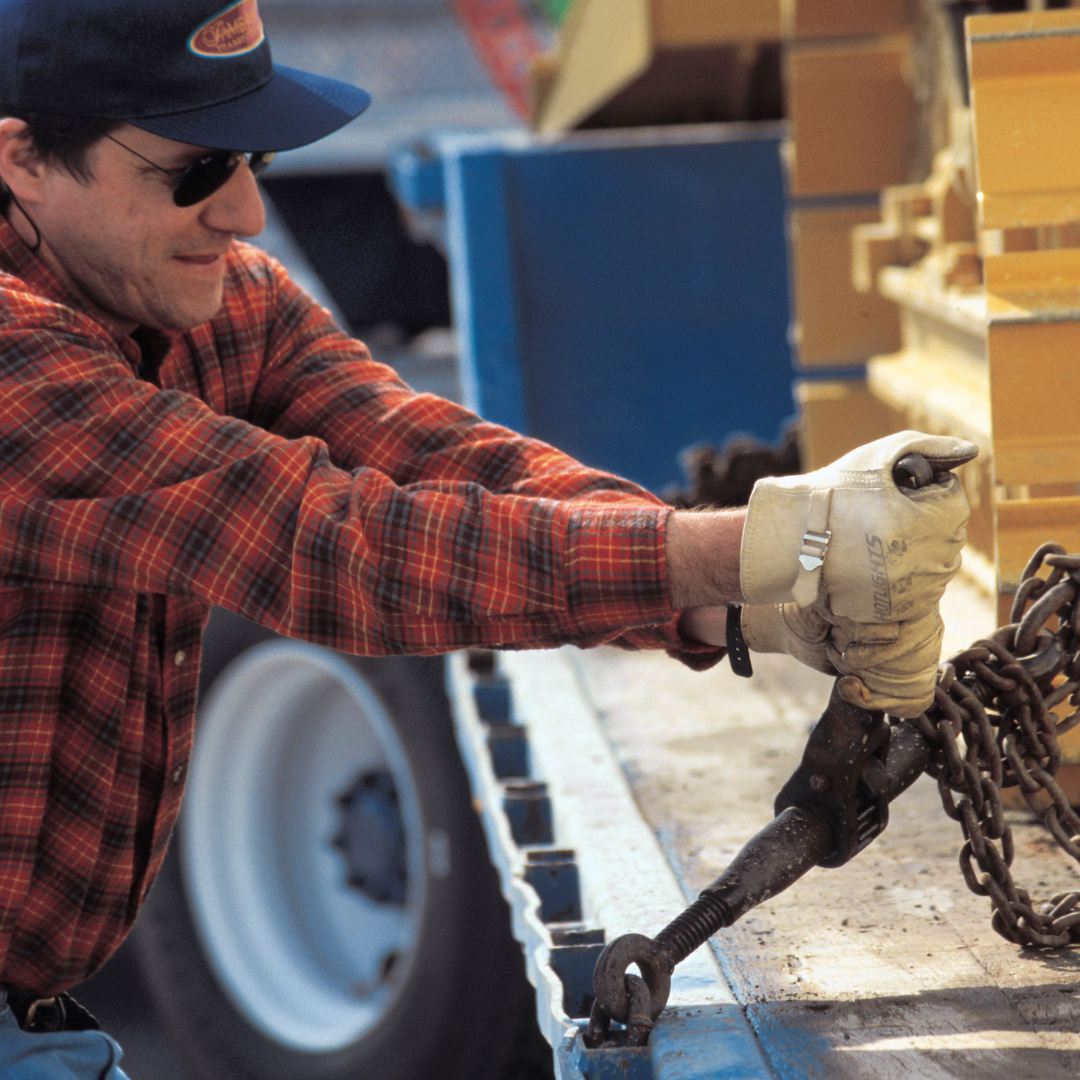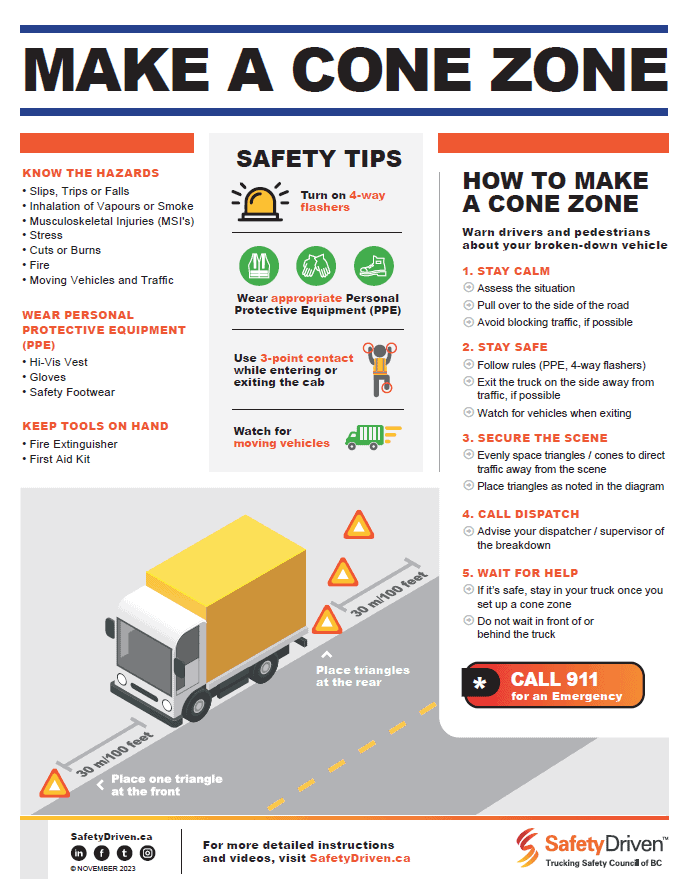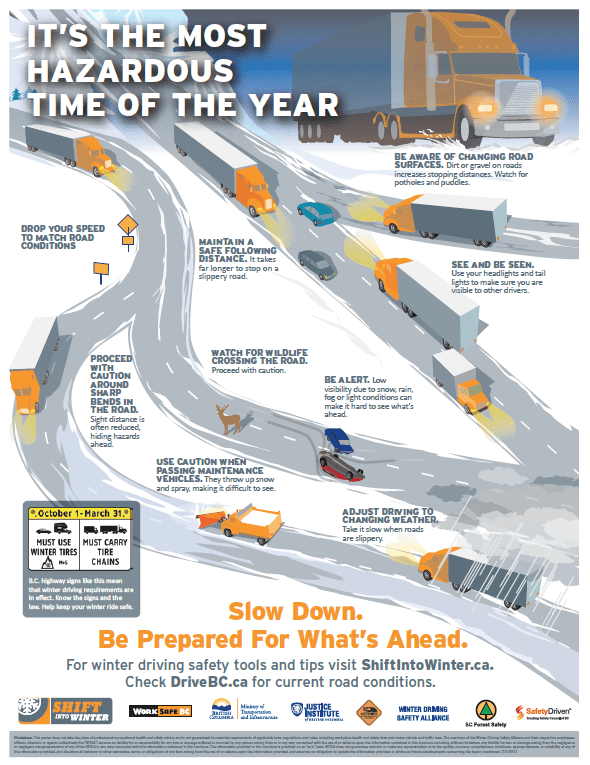
Securing Cargo Safely
The way you secure your cargo can make the difference between a successful delivery and a very bad day.
Proper cargo securement is vital for safe transport.
Loads that are not balanced correctly or that shift during transit can throw off the truck’s handling and cause it to flip. A load that is badly secured can fall onto a driver or someone else, leading to injury or even death.
To prevent such incidents, drivers must know how to secure cargo correctly according to National Safety Code Standard 10. They also need to understand how to stay safe while carrying out this important task to avoid:
– Falls when working on top of a load, inside the trailer, or on ramps
– Overexertion injuries
– Being struck by another vehicle when adjusting/checking a load on the roadside
Falls
Any fall can cause an injury. Just landing awkwardly can break a bone, tear muscles, or cause head injuries. A fall from a height, such as a loading ramp, a trailer, or the top of a load, is even more dangerous. The safety handout Don’t Fall For It describes how to avoid falls while loading/unloading by:
– Wearing proper footwear
– Checking that dock plates are in place
– Clearing away slip and trip hazards (e.g., banding debris)
– Ensuring that trailer access steps, ladders, and handholds are in good condition
Some drivers casually jump down from loading docks, cabs, or trailers—a bad habit. Jumping from even a short height means your body has to absorb the impact of landing. According to 6 Tips to End Trucking Workplace Injuries, “As drivers age, those jolts to the joints will catch up to them—if they don’t immediately injure themselves by landing the wrong way.” A jump can easily turn into a fall, especially when the landing is slippery or unstable. Drivers should never jump. Always use steps, ladders, and proper handholds. Don’t forget to maintain three-point contact.
Overexertion
Handling cargo, tarps, or straps the wrong way can cause overexertion injuries, such as sprains, strains, and muscle damage. For example, workers may be injured when they use their bodies to move pallets that should be moved mechanically or rearrange cargo that has been loaded improperly.
Drivers can reduce the risks by learning proper techniques and using the right equipment. The Load Smart tip sheet recommends placing cargo so it can be moved safely using hand trucks or pallet jacks. It also advises employers to educate drivers on how to identify and deal with risk factors like pinch points, slippery working surfaces, and heavy or unstable loads.
Roadside
The side of a busy road is never a completely safe place. Often drivers have no choice but to pull over to adjust or check a load. To minimize the dangers, drivers need training in setting up a safe roadside work zone and appropriate safety equipment such as high-visibility vests, reflective safety triangles, cones, emergency lights, and flares. Drivers should remind themselves of the hazards by asking:
– Is this the best place to pull over?
– Am I pulling over far enough?
– Can I exit the vehicle safely and work around the truck without crossing the fog line?
– Can I position the truck as a barrier between me and other vehicles?
– Is my placement of cones, triangles, and road flares giving other motorists enough time to react so they can slow down and change lanes?
On February 24, 2021, SafetyDriven is sponsoring Securing Your Safety, a free webinar on load securement hosted by Road Safety At Work. Register now to attend or to access the event recording after the webinar.
For more free resources related to working at heights, overexertion, manual material handling, and other health and safety topics, visit SafetyDriven.ca.
Latest Resources
Make a Cone Zone
Dowload this poster for tips on how to make a safe cone zone.Winter Hazards Poster
Drivers need to recognize winter hazards. Share this poster to remind drivers how to ...

